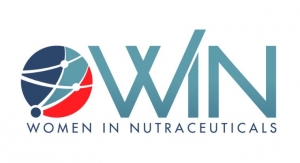By Mike Montemarano, Associate Editor01.20.23
Consumer awareness is high for most single-letter vitamins—A, B, C, D, and E—which are abundant in most multivitamin/mineral supplements. Meanwhile, in many ways, vitamin K is the new kid on the block, earning the spotlight thanks to new research and scientific understanding.
Product formulations, and consumer health, stand to benefit from the addition of a specific form of vitamin K in particular: vitamin K2 (Menaquinone-7), or vitamin K2 MK-7.
Vitamin K includes two natural vitamers: vitamin K1 (phylloquinone) and vitamin K2 (menaquinone). Vitamin K2 consists of several related chemical subtypes, with differing lengths of carbon side chains. The two most studied menaquinones are MK-4 and MK-7. Most mainstream K2 ingredients are MK-7, which has a longer side chain, allowing for more efficient absorption and a longer shelf life.
Vitamin K is a fat-soluble vitamin naturally present in some foods. K1 is found in green, leafy vegetables, while K2 is relatively rare and limited to fermented foods, a small group of cheeses, and meats not typically found in the Western diet.
All forms of vitamin K play a necessary role in normal blood clotting, as it is required for the liver to make a host of blood clotting factors.
While vitamin K1 deficiencies are rare, vitamin K2 is typically absent from Western diets. An analysis of blood samples from 42 children and 68 adults concluded that “substantial concentrations” of deactivated matrix GLA protein (MGP) and osteocalcin—which are both considered markers of vitamin K deficiency—existed in the non-supplemented population.1
Osteocalcin and MGP are implicated in vascular calcification, a condition in which calcium is deposited along the walls of the vascular system. This condition causes veins to become brittle and elevates the risk for heart disease and heart failure. At the same time, bone health worsens because calcium doesn’t follow the metabolic pathway to reach bones. This issue has been described by researchers as the “calcium paradox.”
These biomarkers are involved in the key mechanism of action unique to vitamin K2 and its heart and bone health benefits. MGP is dependent on vitamin K2 to transfer calcium through a metabolic pathway where it is deposited in bones, and not in the arteries of soft tissue. The production of osteocalcin, a calcium-binding protein, has been shown to increase with blood concentrations of vitamin D3; so optimal intake of vitamins D, K, and calcium are needed to achieve the synergistic health benefits of these three nutrients.
Currently, the only dietary recommendations in the U.S. for vitamin K are based around what intake is needed to support normal blood clotting. However, reviews suggest that new measures need to be taken to address vitamin K deficiency and reduce rates of arterial stiffness, vascular calcification, heart failure, and cardiovascular mortality.3
One randomized, double-blind, placebo-controlled clinical trial involving 243 healthy subjects concluded that high vitamin K intake decreased age-related vascular stiffening. The effects were most obvious in women with poor vitamin K status and were statistically significant after one year of treatment.4
While research continues to demonstrate positive effects of supplementation, study results haven’t been unilaterally positive. A study recently published in Circulation found that 720 µg MK-7 plus 25 µg vitamin D taken for 24 months did not influence progression of aortic valve calcification (AVC) in patients with aortic stenosis.5
Numerous studies support the hypothesis that vitamin K2’s impact on calcium metabolism results in improvements to bone health. A 3-year study on postmenopausal women (who are at particularly high risk for bone loss) found that three years of daily MK-7 supplementation resulted in significantly less decline in bone mineral density and improved bone strength.6

A 2020 study suggested that K2 may one day be recommended as a treatment for kidney disease patients at risk of vascular aging, which is a top precursor to heart complications this population experiences.8 Chronic kidney disease patients are at high risk for vascular calcification due to systemic oxidative stress and inflammation resulting in an accelerated aging process.
Observational studies have suggested that vitamin K status may also play a role in the risk of developing osteoarthritis—several K-dependent proteins are present in cartilage and bone.
A cross-sectional study among 719 older adults found that dietary intake of vitamin K was inversely associated with knee osteoarthritis.9 A longitudinal study that tracked vitamin K status over 30 months found that subclinical vitamin K deficiency was associated with a 56% greater incidence of knee osteoarthritis compared to those with higher concentrations, as well as a significant increase in cartilage lesions.10
Vitamin K2 is not found in significant quantities in any plant foods, and is produced at industrial scale either through microbial production or chemical synthesis.
Manufacturing of vitamin K2 has historically been done through fermentation processes. Wild-type or genetically engineered microorganisms are used to ferment starter materials such as soy or corn at an industrial scale.
Common wild-type microorganisms used by producers today include Bacillus subtilis var. natto, a Generally-Recognized As Safe (GRAS) microorganism isolated from the fermented soybean dish called natto. However, several Bacillus and lactic acid bacteria strains have been used to produce MK-7 and MK-4, respectively.
Vitamin K2 in the form of MK-7 exists in two isomers: the trans isomer, the only bioactive form of vitamin K2, and the inactive cis isomer. Isomeric purity relates to the proportion of trans active isomers in an ingredient versus cis isomers. “All-trans” means active vitamin K2 as MK-7, and consequently means delivering the expected health benefits to consumers.
Chemical synthesis of vitamin K, which has been in use for several years, typically requires multiple reaction steps, and can result in the production of all-trans vitamin K2, offering biological activity.
The main reasons why a producer might choose batch-fermentation, synthesis, or both production methods mostly has to do with what they consider to be a more reliable option for turnaround time, consistency, and purity.
The vitamin K supply chain has undergone consolidation in recent years with several major acquisitions.
For example, last year Balchem acquired Kappa Bioscience, a leading supplier of synthetic vitamin K2 offered under its K2VITAL brand.
Gnosis by Lesaffre, which purchased NattoPharma in 2021, offers MenaQ7 Vitamin K2 as MK-7, “the only K2 as MK-7 clinically validated for heart and bone health, and the only K2 as MK-7 patented for cardiovascular health,” with more than 22 published human clinical trials in all, according to Xavier Berger, global market manager with Gnosis by Lesaffre.
The company’s vitamin K2 MK-7 is obtained through fermentation using a patented production process. “Using the power of microorganisms gives us the ability to mimic what is happening in nature, creating a truly natural, all-trans K2 as MK-7 molecule,” said Berger.
“The patented process from Gnosis by Lesaffre starts with the isolation of a non-GMO strain that is then bio-fermented, sent through microfiltration, drying, extracted (with food-grade bioethanol), and then purified. The final step before packaging is blending with the appropriate carrier. The end product is a non-GMO, allergen-free, chemical-free vitamin K2 as MK-7 ingredient produced as close to nature as possible.”
Meanwhile, Novozymes acquired Synergia Life Sciences in late 2021, along with the company’s vitamin K2 brand MenaquinGold vitamin K2 MK-7, which is made through a natural, chickpea-based, soy-free fermentation process. This process makes it “the most biologically active and bioavailable form available,” according to Jeff Lind, national director of B2B sales, Novozymes OneHealth.
“Sourcing matters with supplemental K2, which is important to know given that synthetic K2 is pervasive on the market,” Lind said. “Novozymes OneHealth uses only natural K2 in our MenaquinGold, which is the only way to produce 100% trans isomer (all K2-7). Synthetic forms of K2 can contain up to 40% cis isomer, meaning that percentage is of unknown constitution.”
2. Akbulut, A. et al. (2020). Vitamin K2 Needs an RDI Separate from Vitamin K1. Nutrients. 2020; 12(6):1852. https://doi.org/10.3390/nu12061852
3. Hariri, E. et al. (2021). Vitamin K2—a neglected player in cardiovascular health: a narrative review. Open Heart 2021;8:e001715. doi: 10.1136/openhrt-2021-001715
4. Cees, V. et al. (2020). Effect of Menaquinone-7 (vitamin K2) on vascular elasticity in healthy subjects: results from a one-year study. Vascul Dis Ther, 5: doi: 10.15761/VDT.1000179.
5. Diederichsen, A. et al. (2022). Vitamin K2 and D in Patients With Aortic Valve Calcification: A Randomized Double-Blinded Clinical Trial. 25 Apr 2022 Circulation. 2022;145:1387–1397 https://doi.org/10.1161/CIRCULATIONAHA.121.057008
6. Knapen, M. et al. (2013). Three-year low-dose menaquinone-7 supplementation helps decrease bone loss in healthy postmenopausal women. Osteoporos Int 24, 2499–2507. https://doi.org/10.1007/s00198-013-2325-6
7. van Summeren, M. et al. (2009). The effect of menaquinone-7 (vitamin K2) supplementation on osteocalcin carboxylation in healthy prepubertal children. Br J Nutr. 2009 Oct;102(8):1171-8. doi: 10.1017/S0007114509382100.
8. Dai, L. et al. (2020). Early vascular ageing in chronic kidney disease: impact of inflammation, vitamin K, senescence and genomic damage. Nephrol Dial Transplant. 2020 Mar 1;35(Suppl 2):ii31-ii37. doi: 10.1093/ndt/gfaa006
9. Oka, H. et al. (2009). Association of low dietary vitamin K intake with radiographic knee osteoarthritis in the Japanese elderly population: dietary survey in a population-based cohort of the ROAD study. J Orthop Sci. 2009 Nov;14(6):687-92. https://doi.org/10.1007/s00776-009-1395-y
10. Misra, D. et al. (2013). Vitamin K deficiency is associated with incident knee osteoarthritis. Am J Med. 2013 Mar;126(3):243-8. https://doi.org/10.1016/j.amjmed.2012.10.011
Product formulations, and consumer health, stand to benefit from the addition of a specific form of vitamin K in particular: vitamin K2 (Menaquinone-7), or vitamin K2 MK-7.
Vitamin K and Where It’s Found
Vitamin K was first discovered in 1929 by Danish biochemist Carl Peter Henrik Dam, and was immediately found to be associated with blood coagulation during experiments on sterol metabolism. It was given its name based on the German for coagulation (“koagulation”).Vitamin K includes two natural vitamers: vitamin K1 (phylloquinone) and vitamin K2 (menaquinone). Vitamin K2 consists of several related chemical subtypes, with differing lengths of carbon side chains. The two most studied menaquinones are MK-4 and MK-7. Most mainstream K2 ingredients are MK-7, which has a longer side chain, allowing for more efficient absorption and a longer shelf life.
Vitamin K is a fat-soluble vitamin naturally present in some foods. K1 is found in green, leafy vegetables, while K2 is relatively rare and limited to fermented foods, a small group of cheeses, and meats not typically found in the Western diet.
Vitamin K1 vs. K2
Pharmacokinetic studies have demonstrated important differences in how the body absorbs and utilizes vitamins K1 and K2. Vitamin K2 is absorbed more efficiently than vitamin K1, and more readily enters the bloodstream, whereas K1 is mostly stored in the liver.All forms of vitamin K play a necessary role in normal blood clotting, as it is required for the liver to make a host of blood clotting factors.
While vitamin K1 deficiencies are rare, vitamin K2 is typically absent from Western diets. An analysis of blood samples from 42 children and 68 adults concluded that “substantial concentrations” of deactivated matrix GLA protein (MGP) and osteocalcin—which are both considered markers of vitamin K deficiency—existed in the non-supplemented population.1
Osteocalcin and MGP are implicated in vascular calcification, a condition in which calcium is deposited along the walls of the vascular system. This condition causes veins to become brittle and elevates the risk for heart disease and heart failure. At the same time, bone health worsens because calcium doesn’t follow the metabolic pathway to reach bones. This issue has been described by researchers as the “calcium paradox.”
These biomarkers are involved in the key mechanism of action unique to vitamin K2 and its heart and bone health benefits. MGP is dependent on vitamin K2 to transfer calcium through a metabolic pathway where it is deposited in bones, and not in the arteries of soft tissue. The production of osteocalcin, a calcium-binding protein, has been shown to increase with blood concentrations of vitamin D3; so optimal intake of vitamins D, K, and calcium are needed to achieve the synergistic health benefits of these three nutrients.
Heart and Bone Health
Currently, there is no Recommended Daily Intake (RDI) for vitamin K2 in the U.S. Several studies investigating vitamin K2’s unique activity are building the case for establishing a daily recommended intake of K2, distinct from K1.2Currently, the only dietary recommendations in the U.S. for vitamin K are based around what intake is needed to support normal blood clotting. However, reviews suggest that new measures need to be taken to address vitamin K deficiency and reduce rates of arterial stiffness, vascular calcification, heart failure, and cardiovascular mortality.3
One randomized, double-blind, placebo-controlled clinical trial involving 243 healthy subjects concluded that high vitamin K intake decreased age-related vascular stiffening. The effects were most obvious in women with poor vitamin K status and were statistically significant after one year of treatment.4
While research continues to demonstrate positive effects of supplementation, study results haven’t been unilaterally positive. A study recently published in Circulation found that 720 µg MK-7 plus 25 µg vitamin D taken for 24 months did not influence progression of aortic valve calcification (AVC) in patients with aortic stenosis.5
Numerous studies support the hypothesis that vitamin K2’s impact on calcium metabolism results in improvements to bone health. A 3-year study on postmenopausal women (who are at particularly high risk for bone loss) found that three years of daily MK-7 supplementation resulted in significantly less decline in bone mineral density and improved bone strength.6

Emerging Health Benefits of Vitamin K
Studies have shown that the bone health benefits aren’t exclusive to high-risk or older populations. A study of healthy children between the ages of six and 10 found that daily supplementation resulted in stronger, denser bones.7A 2020 study suggested that K2 may one day be recommended as a treatment for kidney disease patients at risk of vascular aging, which is a top precursor to heart complications this population experiences.8 Chronic kidney disease patients are at high risk for vascular calcification due to systemic oxidative stress and inflammation resulting in an accelerated aging process.
Observational studies have suggested that vitamin K status may also play a role in the risk of developing osteoarthritis—several K-dependent proteins are present in cartilage and bone.
A cross-sectional study among 719 older adults found that dietary intake of vitamin K was inversely associated with knee osteoarthritis.9 A longitudinal study that tracked vitamin K status over 30 months found that subclinical vitamin K deficiency was associated with a 56% greater incidence of knee osteoarthritis compared to those with higher concentrations, as well as a significant increase in cartilage lesions.10
Sourcing Vitamin K
Vitamin K1 is synthesized by a wide variety of plants, and is found in the highest quantities in leafy greens because it is directly involved in photosynthesis. As a nutraceutical, it can be produced by natural extraction from plant material, chemical synthesis, and microbial fermentation.Vitamin K2 is not found in significant quantities in any plant foods, and is produced at industrial scale either through microbial production or chemical synthesis.
Manufacturing of vitamin K2 has historically been done through fermentation processes. Wild-type or genetically engineered microorganisms are used to ferment starter materials such as soy or corn at an industrial scale.
Common wild-type microorganisms used by producers today include Bacillus subtilis var. natto, a Generally-Recognized As Safe (GRAS) microorganism isolated from the fermented soybean dish called natto. However, several Bacillus and lactic acid bacteria strains have been used to produce MK-7 and MK-4, respectively.
Vitamin K2 in the form of MK-7 exists in two isomers: the trans isomer, the only bioactive form of vitamin K2, and the inactive cis isomer. Isomeric purity relates to the proportion of trans active isomers in an ingredient versus cis isomers. “All-trans” means active vitamin K2 as MK-7, and consequently means delivering the expected health benefits to consumers.
Chemical synthesis of vitamin K, which has been in use for several years, typically requires multiple reaction steps, and can result in the production of all-trans vitamin K2, offering biological activity.
The main reasons why a producer might choose batch-fermentation, synthesis, or both production methods mostly has to do with what they consider to be a more reliable option for turnaround time, consistency, and purity.
The vitamin K supply chain has undergone consolidation in recent years with several major acquisitions.
For example, last year Balchem acquired Kappa Bioscience, a leading supplier of synthetic vitamin K2 offered under its K2VITAL brand.
Gnosis by Lesaffre, which purchased NattoPharma in 2021, offers MenaQ7 Vitamin K2 as MK-7, “the only K2 as MK-7 clinically validated for heart and bone health, and the only K2 as MK-7 patented for cardiovascular health,” with more than 22 published human clinical trials in all, according to Xavier Berger, global market manager with Gnosis by Lesaffre.
The company’s vitamin K2 MK-7 is obtained through fermentation using a patented production process. “Using the power of microorganisms gives us the ability to mimic what is happening in nature, creating a truly natural, all-trans K2 as MK-7 molecule,” said Berger.
“The patented process from Gnosis by Lesaffre starts with the isolation of a non-GMO strain that is then bio-fermented, sent through microfiltration, drying, extracted (with food-grade bioethanol), and then purified. The final step before packaging is blending with the appropriate carrier. The end product is a non-GMO, allergen-free, chemical-free vitamin K2 as MK-7 ingredient produced as close to nature as possible.”
Meanwhile, Novozymes acquired Synergia Life Sciences in late 2021, along with the company’s vitamin K2 brand MenaquinGold vitamin K2 MK-7, which is made through a natural, chickpea-based, soy-free fermentation process. This process makes it “the most biologically active and bioavailable form available,” according to Jeff Lind, national director of B2B sales, Novozymes OneHealth.
“Sourcing matters with supplemental K2, which is important to know given that synthetic K2 is pervasive on the market,” Lind said. “Novozymes OneHealth uses only natural K2 in our MenaquinGold, which is the only way to produce 100% trans isomer (all K2-7). Synthetic forms of K2 can contain up to 40% cis isomer, meaning that percentage is of unknown constitution.”
References
1. Theuwissen, E. et al. (2014). Vitamin K status in healthy volunteers. Food Funct. 2014 Feb;5(2):229-34. https://doi.org/10.1039/C3FO60464K2. Akbulut, A. et al. (2020). Vitamin K2 Needs an RDI Separate from Vitamin K1. Nutrients. 2020; 12(6):1852. https://doi.org/10.3390/nu12061852
3. Hariri, E. et al. (2021). Vitamin K2—a neglected player in cardiovascular health: a narrative review. Open Heart 2021;8:e001715. doi: 10.1136/openhrt-2021-001715
4. Cees, V. et al. (2020). Effect of Menaquinone-7 (vitamin K2) on vascular elasticity in healthy subjects: results from a one-year study. Vascul Dis Ther, 5: doi: 10.15761/VDT.1000179.
5. Diederichsen, A. et al. (2022). Vitamin K2 and D in Patients With Aortic Valve Calcification: A Randomized Double-Blinded Clinical Trial. 25 Apr 2022 Circulation. 2022;145:1387–1397 https://doi.org/10.1161/CIRCULATIONAHA.121.057008
6. Knapen, M. et al. (2013). Three-year low-dose menaquinone-7 supplementation helps decrease bone loss in healthy postmenopausal women. Osteoporos Int 24, 2499–2507. https://doi.org/10.1007/s00198-013-2325-6
7. van Summeren, M. et al. (2009). The effect of menaquinone-7 (vitamin K2) supplementation on osteocalcin carboxylation in healthy prepubertal children. Br J Nutr. 2009 Oct;102(8):1171-8. doi: 10.1017/S0007114509382100.
8. Dai, L. et al. (2020). Early vascular ageing in chronic kidney disease: impact of inflammation, vitamin K, senescence and genomic damage. Nephrol Dial Transplant. 2020 Mar 1;35(Suppl 2):ii31-ii37. doi: 10.1093/ndt/gfaa006
9. Oka, H. et al. (2009). Association of low dietary vitamin K intake with radiographic knee osteoarthritis in the Japanese elderly population: dietary survey in a population-based cohort of the ROAD study. J Orthop Sci. 2009 Nov;14(6):687-92. https://doi.org/10.1007/s00776-009-1395-y
10. Misra, D. et al. (2013). Vitamin K deficiency is associated with incident knee osteoarthritis. Am J Med. 2013 Mar;126(3):243-8. https://doi.org/10.1016/j.amjmed.2012.10.011




























